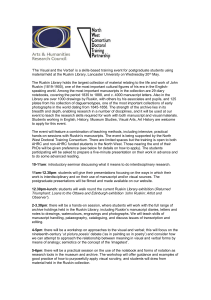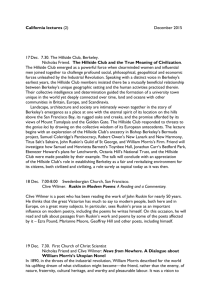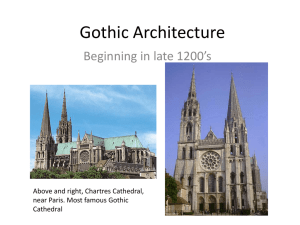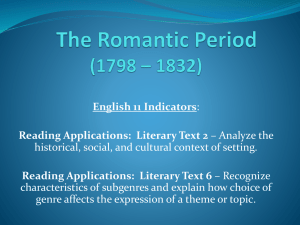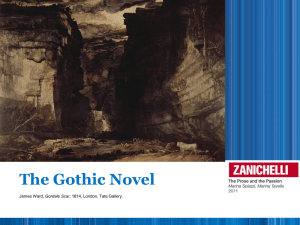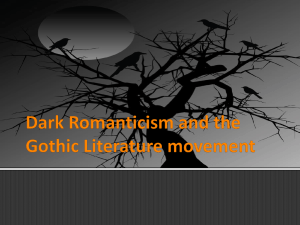Ruskin admired not only Gothic style, but the medieval society that
advertisement
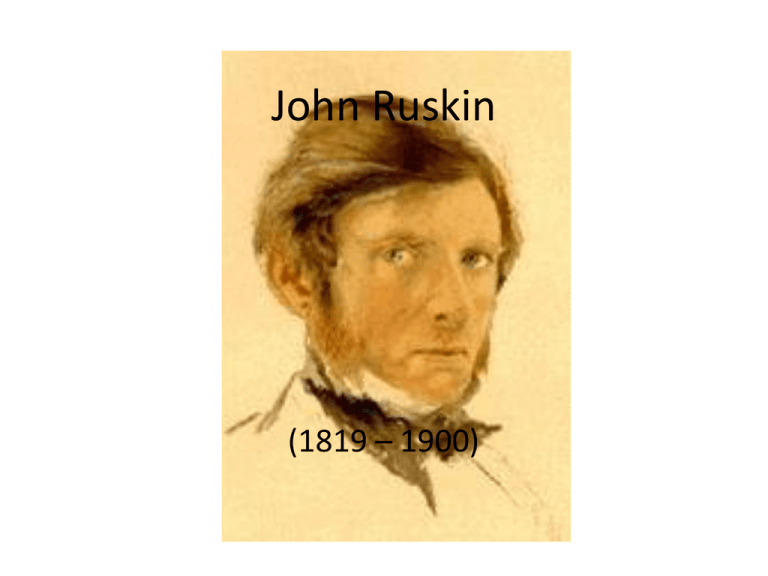
John Ruskin (1819 – 1900) • • • • • • 1. 2. 3. 4. 5. 6. • Art critic; Main merits: advocacy of Art and Literature. Already as a child, he travelled extensively with his father both in England and abroad. These journeys allowed him to appreciate the beautiful in art wherever he found it and contributed to his comprehensive knowledge of European art. He wrote several works on art and on its relationship with society. His thought is based on the following principles: Beauty and Art are closely connected. Beauty has a moral function: it helps us develop a high moral sense; Art contributes to the spiritual health of man. All great art derives from deep morality. Industrial society, lacks spiritual values, so cannot produce great art; the Middle Ages society is characterized by deep morality. Consequently .... he exalts Gothic art, i.e. the art produced by medieval society. RUSKIN’S MAIN WORKS AS A CRITIC •1843: first volume of one of his major works, Modern Painters, • This work argued that modern landscape painters — and in particular Joseph Mallord William Turner — were superior to the so-called "Old Masters" of the past Renaissance period. •Ruskin's attack on the old masters, like Gaspard Dughet (Gaspar Poussin)(1613-1675), Claude Lorrain (1600-1682), and Salvator Rosa (1615 -1673), centred on what Ruskin perceived as their lack of attention to natural truth. •Rather than 'going to nature', as Turner did, the old masters 'composed' or invented their landscapes in their studios. •For Ruskin, modern painters, like Turner, showed a much more profound understanding of nature, observing the 'truths' of water, air, clouds, stones, and vegetation. • • • • • • • • • • • • 1849 : “The Seven Lamps of Architecture” a treatise on the principal types of European Architecture. architecture is seen as the most representative of the arts, the only one that can really reflect the spirit of an entire nation. a defence of Gothic as the noblest style of architecture. Ruskin admired not only Gothic style, but the medieval society that had been able to produce it, because .... this society was inspired and guided by a deep morality. He was against the neo-Gothic style which the buildings of his age were characterized by. He, in fact, thought that a mechanized society based on impersonal and non-creative mass production could not produce pure Gothic style any more. (1851-53): the “Stones of Venice” a new exaltation of the Gothic style in one of its most original expressions the Venetian Gothic. RUSKIN - THE SOCIAL CRITIC • Ruskin was also a social reformer. • He had the greatest sympathy for the workman and the labourer; • He advocated: • some form of socialism, • a system of education, • a better organization of labour and other social reforms. • He openly criticized the doctrine of laissez-faire and continuously preached against industrialism as the destroyer, through degrading mass production, of “pleasure in the work”. • Therefore, his approach was, often that of an aesthete. • He can be considered the spiritual father of the PreRaphaelite movement and in part the forerunner of the aesthetic movement .
